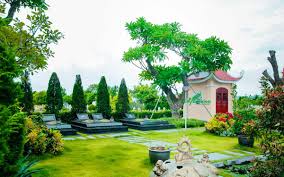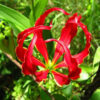Blue Willow China in Western Traditional Ceremonies: A Symbol of Elegance and Heritage

Blue Willow China, with its iconic blue-and-white design featuring pagodas, willow trees, birds, and flowing rivers, is one of the most recognized and enduring porcelain patterns in the world. Originating in the 18th century in England, Blue Willow China has become more than just a dinnerware design—it has evolved into a cultural symbol with a deep connection to Western traditions and ceremonies. From weddings and formal dinners to holiday gatherings and family celebrations, Blue Willow China has been featured in various ceremonies and rituals, acting as a silent yet elegant observer of important moments in life.
In this article, we will explore how Blue Willow China plays a significant role in traditional Western ceremonies, from its historical roots to its modern-day applications. We will discuss its symbolism, its enduring presence in various ceremonies, and its place in the hearts of those who value heritage, tradition, and the timeless beauty of fine porcelain.
1. The Origins and Symbolism of Blue Willow China
Before delving into its role in Western ceremonies, it is essential to understand the origins and symbolism of Blue Willow China. The design was first created in England in the late 18th century, although the motifs were inspired by Chinese porcelain designs that were highly popular at the time. The Blue Willow pattern tells a story—a love story, in fact—depicting a beautiful maiden and her lover escaping to be together, but tragically being pursued by the maiden’s father. They are transformed into birds and fly away together, symbolizing eternal love and freedom.
The symbolism within Blue Willow China holds much significance. The willow tree, for example, represents weeping or mourning, while the pagoda symbolizes strength and shelter. The flowing river signifies the passage of time, and the birds represent freedom and love. These motifs offer deep emotional resonance, making the Blue Willow design more than just a decorative piece. It has become a symbol of love, resilience, and the ability to overcome adversity, themes that resonate strongly in the context of Western ceremonies.
2. Blue Willow China in Weddings: A Symbol of Tradition and Romance
Weddings are one of the most significant and cherished ceremonies in Western culture, where the blending of history, family, and love plays a central role. Blue Willow China has a long-standing connection to weddings, where its symbolism of love and commitment has made it a popular choice for both decor and gifting.
In many Western countries, it is traditional for families to present a bride with a set of fine china as part of her wedding registry, symbolizing the importance of family, heritage, and the foundation of the new home she and her partner will build together. Blue Willow China, with its timeless design and rich symbolism, is often selected for these occasions. The set not only reflects the beauty of the couple’s union but also ties them to generations of families that have used similar tableware to celebrate major life events.
Some couples choose to incorporate Blue Willow China into their wedding ceremony by using it for the reception table settings, as it represents an enduring love story that mirrors their own. The pattern’s deep history and classic appeal make it a perfect fit for a traditional wedding, where the symbolism of eternal love and familial connections is so important. Whether it’s used as part of the wedding gift registry or as the centerpiece of the dinner table, Blue Willow China plays an understated yet powerful role in the wedding ceremony.
3. Blue Willow China in Family Gatherings and Holiday Celebrations
In many Western homes, Blue Willow China is often brought out during important family gatherings and holiday celebrations. These occasions are a time to honor tradition, celebrate familial bonds, and create lasting memories. Blue Willow China, with its historical and cultural significance, is a popular choice for these special events, where its classic design enhances the ceremonial atmosphere.
Christmas, Thanksgiving, and Easter are just a few of the occasions when Blue Willow China might be used to serve meals or decorate the dinner table. The traditional blue-and-white color scheme of the china lends itself beautifully to holiday decor, often pairing well with other festive elements such as fresh flowers, candles, and fine linens. The use of Blue Willow China during these occasions evokes a sense of continuity and heritage, reminding guests of the importance of family traditions and the joy of shared celebrations.
In addition to major holidays, Blue Willow China is also used in more intimate family gatherings, such as birthdays, anniversaries, or milestone events. Its presence on the table becomes more than just a piece of tableware—it becomes a vessel for memories, carrying with it the stories and traditions of generations past.
4. Blue Willow China and Formal Dinners: An Embodiment of Elegance and Refinement
Formal dinners are another area in which Blue Willow China has carved out a special place in Western ceremonial life. Whether it’s a diplomatic banquet, a state dinner, or an intimate gathering of friends, the presence of Blue Willow China on the dining table elevates the entire experience. Its intricate design and timeless appeal make it an ideal choice for occasions where elegance and refinement are paramount.
The Blue Willow pattern’s delicate design adds an element of sophistication to any formal event. Its detailed portrayal of nature, paired with the subtle beauty of its color scheme, exudes both formality and warmth. This makes it an ideal choice for events that emphasize both beauty and hospitality, creating an inviting yet luxurious atmosphere.
Additionally, Blue Willow China has a reputation for being a conversation starter. Its intricate design and historical significance often spark discussions about its origins, the love story it represents, and its place in Western culture. In this way, Blue Willow China plays a role not only as an aesthetic choice but as a symbol of conversation, culture, and connection.
5. Blue Willow China in Memorials and Ceremonial Gatherings
The symbolism of Blue Willow China, with its motifs of loss and love, also makes it a fitting addition to memorials and ceremonial gatherings honoring loved ones who have passed. The blue willow tree, with its weeping branches, evokes emotions of mourning and remembrance, while the eternal love story depicted in the design symbolizes the enduring connection between generations.
In memorial services or anniversary remembrances, Blue Willow China may be displayed as a tribute to those who have passed, providing comfort and continuity to grieving families. The china’s timeless appeal and symbolic resonance make it a meaningful way to honor the memory of loved ones, while also connecting future generations to their shared family history.
Whether used on the dinner table or as part of a tribute display, Blue Willow China serves as a reminder of the beauty of life, the strength of familial ties, and the enduring power of love across generations.
6. The Legacy of Blue Willow China: A Symbol of Tradition in Modern Ceremonies
As we move further into the 21st century, traditional Western ceremonies are evolving, yet the role of Blue Willow China remains steadfast. While the specifics of these ceremonies may change with time—whether through the modernization of wedding traditions or the changing formats of family gatherings—Blue Willow China continues to hold a revered place in these rituals, linking the present to the past.
In today’s world, Blue Willow China is often seen as a bridge between generations, connecting modern families to their cultural heritage. Whether used in formal or casual settings, Blue Willow China helps create a sense of continuity, reminding individuals of the importance of tradition and the rituals that bind them together. It is a testament to the lasting impact of the past on present-day life and the ways in which heritage and culture continue to shape our celebrations and ceremonies.
Moreover, the enduring popularity of Blue Willow China in Western traditions highlights its versatility. It can seamlessly fit into both traditional and contemporary settings, adapting to various styles while maintaining its sense of elegance and significance. From weddings to holiday dinners, from formal gatherings to quiet family moments, Blue Willow China continues to be a cherished part of Western ceremonial life.
7. Conclusion: Blue Willow China as a Cultural Legacy in Western Traditions
Blue Willow China’s enduring presence in Western ceremonial life is a testament to its timeless appeal and cultural significance. Whether it’s at weddings, family gatherings, formal dinners, or memorials, Blue Willow China adds an element of elegance, tradition, and meaning to these special occasions. Its intricate design, rich symbolism, and connection to love, loss, and resilience make it an ideal choice for a variety of Western ceremonies, reminding us of the beauty and importance of tradition in our modern lives.
As we continue to celebrate life’s milestones and commemorate the moments that matter most, Blue Willow China will undoubtedly remain an important symbol, bridging the gap between past and present, and helping to preserve the cultural heritage of Western traditions for generations to come.

